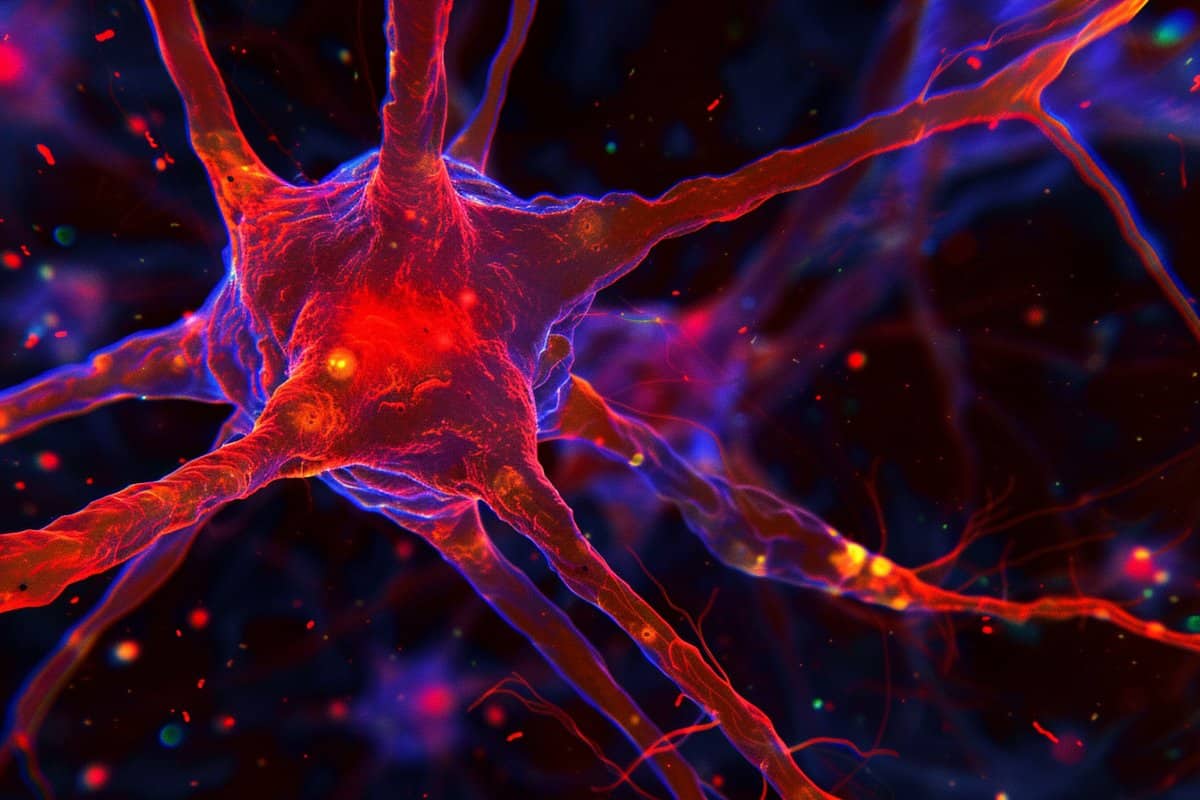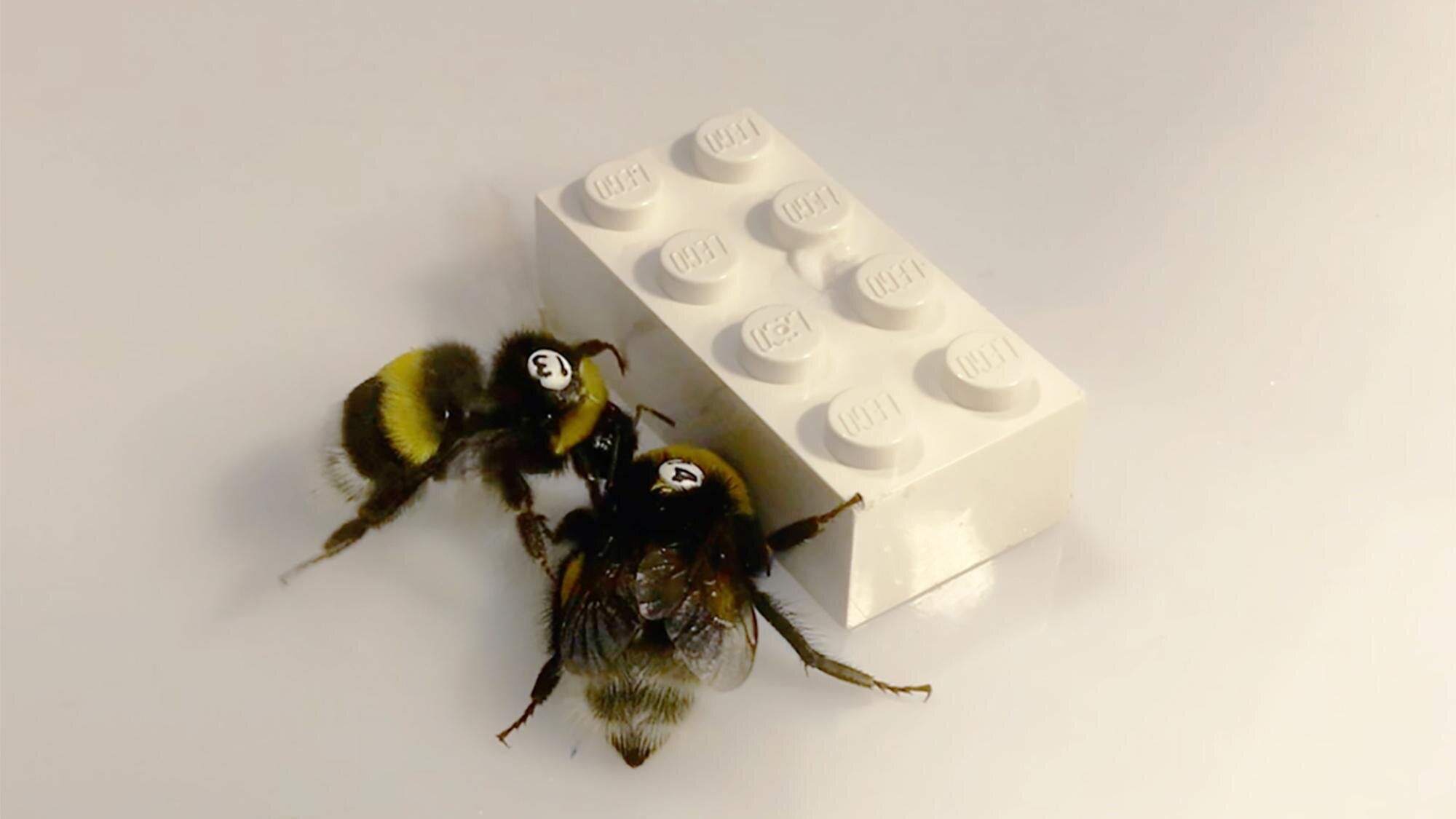Summary: New research reveals the pivotal role of astrocytes in the basolateral amygdala (BLA) in modulating risk assessment behaviors, which are often disrupted in mental disorders. The study used advanced techniques to explore how these brain cells influence a specific group of neurons in the BLA that are crucial for evaluating threats.
The team found that activating astrocytes could restore normal behavior in mice genetically modified to show impaired risk responses, providing new insights into the cellular interactions that underpin mental health conditions. This research highlights the potential of targeting astrocyte-neuron interactions as a therapeutic strategy for mental disorders characterized by altered risk behaviors.
Key Facts:
- The study focused on the role of astrocytes in the basolateral amygdala, a brain area critical for behavioral responses to threats.
- By enhancing astrocyte activity, researchers could correct abnormal risk assessment behaviors in a mouse model of mental disorders.
- This research underscores the importance of astrocyte-neuron interactions in the brain’s ability to assess risks, offering a new avenue for therapeutic interventions in mental health.
Source: Chinese Academy of Sciences
Astrocytes, as vital cells in the central nervous system, are crucial for brain health and function. Recent research shows that they influence higher cognitive functions and behaviors by regulating local neuronal activity.
During stress, animals and humans assess risks to generate adaptive behaviors like avoidance. Mental disorders often disrupt this process, leading to excessive risk aversion (e.g., anxiety, depression, and autism) or insufficient risk avoidance (e.g., substance abuse, and schizophrenia).
However, the neural basis of these disruptions is not fully understood. While the basolateral amygdala (BLA) is known for active avoidance, its specific regulatory role in risk assessment and subsequent behaviors remains unclear.
Recently, Prof. Tu Jie’s team at the Shenzhen Institute of Advanced Technology (SIAT) of the Chinese Academy of Sciences conducted a study on astrocytes in the BLA to investigate their roles in regulating impaired risk assessment in mental disorders.
The findings were published in Neuron.
In previous work, researchers utilized a unique transgenic mouse model, DISC1-N mutant transgenic mice, to uncover impaired avoidance responses in these mice when confronted with threats.
In this study, researchers employed single-nucleus RNA sequencing in conjunction with patch-clamp and real-time quantitative single-cell PCR techniques to identify a specific group of glutamatergic excitatory neurons expressing Wolfram syndrome 1 (WFS1) in the BLA.
These neurons received induced action potentials from nearby astrocytes. In DISC1-N mice, these neurons exhibited reduced firing capabilities and impaired interaction with astrocytes.
By activating astrocytes in the BLA using optogenetics/chemogenetics methods and through D-serine’s action on the N-methyl-D-aspartic acid (NMDA) receptors of BLA-WFS1 neurons, researchers found that the excitability of these neurons can be restored, thereby improving abnormal risk assessment behavior in DISC1-N mice.
They also observed that direct activation of BLA-WFS1 does not effectively correct the deficient risk avoidance behavior in DISC1-N mice.
After seven years of hard work, researchers confirmed that specific neurons in the BLA require interaction with astrocytes to perform normal risk assessment, which highlights the insufficiency of autonomous neuronal activity alone in carrying out relevant risk-assessment functions.
Moreover, they revealed the disruption in astrocyte-neuron communication as a crucial mechanism contributing to deficits in risk- assessment.
“Our study offers evidence of the critical role of astrocytes in regulating behavior, and presents novel therapeutic targets for addressing impairments in risk assessment function within mental disorders,” said Prof. Tu.
About this neuroscience and mental health research news
Author: Liu Jia
Source: Chinese Academy of Sciences
Contact: Liu Jia – Chinese Academy of Sciences
Image: The image is credited to Neuroscience News
Original Research: Closed access.
“Astrocyte-mediated regulation of BLAWFS1 neurons alleviates risk-assessment deficits in DISC1-N mice” by Xinyi Zhou et al. Neuron
Abstract
Astrocyte-mediated regulation of BLAWFS1 neurons alleviates risk-assessment deficits in DISC1-N mice
Highlights
- DISC1-N mutation impacts risk assessment
- BLAWFS1 neuron-astrocyte dysfunction in DISC1-N mice
- Stimulating astrocytes revives BLAWFS1 neuron fire in DISC1-N
- Astrocytes activation restores risk response via D-serine at NMDA receptors
Summary
Assessing and responding to threats is vital in everyday life. Unfortunately, many mental illnesses involve impaired risk assessment, affecting patients, families, and society. The brain processes behind these behaviors are not well understood.
We developed a transgenic mouse model (disrupted-in-schizophrenia 1 [DISC1]-N) with a disrupted avoidance response in risky settings.
Our study utilized single-nucleus RNA sequencing and path-clamp coupling with real-time RT-PCR to uncover a previously undescribed group of glutamatergic neurons in the basolateral amygdala (BLA) marked by Wolfram syndrome 1 (WFS1) expression, whose activity is modulated by adjacent astrocytes.
These neurons in DISC1-N mice exhibited diminished firing ability and impaired communication with the astrocytes.
Remarkably, optogenetic activation of these astrocytes reinstated neuronal excitability via D-serine acting on BLAWFS1 neurons’ NMDA receptors, leading to improved risk-assessment behavior in the DISC1-N mice.
Our findings point to BLA astrocytes as a promising target for treating risk-assessment dysfunctions in mental disorders.

Sarah Carter is a health and wellness expert residing in the UK. With a background in healthcare, she offers evidence-based advice on fitness, nutrition, and mental well-being, promoting healthier living for readers.








